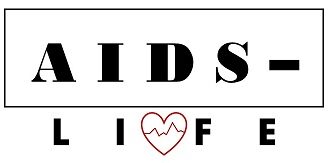Tuberculosis and HIV infection: life expectancy and treatment
Tuberculosis is a contagious disease that can be transmitted from one person to another through airborne transmission. Tuberculosis usually affects the lungs, but the bacteria that causes TB can affect any part of the body or organ, including the kidneys, spine, or brain. If treatment is not started promptly, tuberculosis can lead to death.
Tuberculosis due to HIV infection
Tuberculosis is an infection caused by bacteria. Most often, this disease affects the lungs, but can also affect other organs, such as bones or the nervous system. Tuberculosis is considered a fairly serious disease, but fortunately it can be cured.
Tuberculosis is caused by the bacterium Mycobacterium tuberculosis. It can be spread through respiratory droplets, such as when a person with TB coughs or sneezes.
Tuberculosis bacteria entering the human body causes illness soon after initial exposure, however, a healthy immune system can prevent the development of tuberculosis bacteria.
When TB bacteria remain in the lungs but are controlled by the immune system, it is called latent TB. People with latent tuberculosis are not infectious to others. However, bacteria in the lungs can trigger the disease years later, and this is called reactivation of TB.
People living with HIV infection are at greater risk of developing tuberculosis the first time they are exposed to the bacteria. If an HIV-infected person has a weakened immune system, the likelihood of developing reactivation of TB increases.
Tuberculosis is an opportunistic infection of HIV . Opportunistic infections are infections that occur more frequently or are more severe in people with weakened immune systems than in people with healthy immune systems. Because HIV weakens the immune system, this increases the risk of developing tuberculosis due to HIV infection.
Tuberculosis and HIV coinfection is when people become infected with both HIV infection and latent or active tuberculosis.
The danger of contracting tuberculosis against the background of HIV infection is that each disease accelerates the progression of the other. Thus, HIV accelerates the transition of tuberculosis from the latent stage to the active stage. In turn, tuberculosis bacteria accelerate the development of HIV infection in the human body.
Tuberculosis is a significant cause of illness and death in people living with HIV worldwide. For example, in the UK it is one of the most common AIDS-related diseases. Although the overall number of TB cases in developed countries has fallen in recent years, the number of new cases of people living with HIV has increased between 2011 and 2015.
Thus, the life expectancy of people with tuberculosis and HIV infection depends on timely and correct treatment.
Symptoms of tuberculosis
Tuberculosis most often affects the lungs, causing symptoms such as:
- a cough that lasts more than three weeks (often with sputum that may contain blood);
- loss of appetite;
- weight loss;
- fatigue;
- night sweats;
- fever;
- tumors in the neck;
- shortness of breath that gets worse over time.
The bacteria can spread to other parts of the body, causing symptoms such as persistent headache, stiffness and pain in the joints, swollen glands over a long period, confusion and abdominal pain.
Without treatment, tuberculosis is a potentially life-threatening condition. Tuberculosis due to HIV infection shortens a person’s life expectancy, so it is very important to diagnose and begin to treat this opportunistic disease in time.
Active tuberculosis can significantly increase the HIV viral load in people not taking HIV treatment.
Treatment of tuberculosis against the background of HIV infection: clinical recommendations
For people suffering from tuberculosis and HIV infection, clinical recommendations will be prescribed by the attending physician after diagnosis.
If an HIV-infected patient has a latent form of tuberculosis, the doctor will most likely prescribe a course of the anti-TB drug Isoniazid for 6 months or a combination of the anti-TB drugs Rifampicin and Isoniazid for 3 months. As practice shows, such treatment reduces the risk of developing active tuberculosis. Starting HIV treatment will also reduce the chance of TB coming back.
Active tuberculosis is treated with a combination of antibiotics . Successful treatment usually requires at least 6 months of therapy without missed doses. As with HIV treatment, it is very important that TB treatment is carried out as prescribed by your doctor.
Like HIV, TB bacteria can become resistant to drugs, and some strains of TB are resistant to several different drugs. These strains can cause a very serious disease called multidrug-resistant tuberculosis (MDR-TB). MDR-TB can usually be successfully treated after identifying drugs to which the body is still sensitive.
Some strains of tuberculosis are resistant not only to first-line drugs, but also to many second-line drugs. This is called extensively drug-resistant tuberculosis (XDR-TB) , which often develops in people with HIV infection.
Treatment of tuberculosis due to HIV infection is also complicated by the fact that the simultaneous use of certain drugs against HIV and tuberculosis may increase the risk of side effects. Therefore, the process of treating tuberculosis in HIV-infected people is carefully monitored by the attending physician.
Therefore, people with TB and HIV infection should be treated for both diseases. However, when to start treatment and what medications to take varies from person to person. Remember that only a doctor can prescribe the treatment that is right for you.




